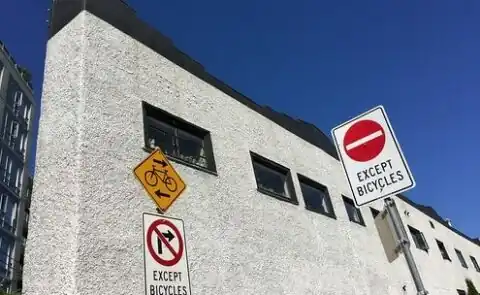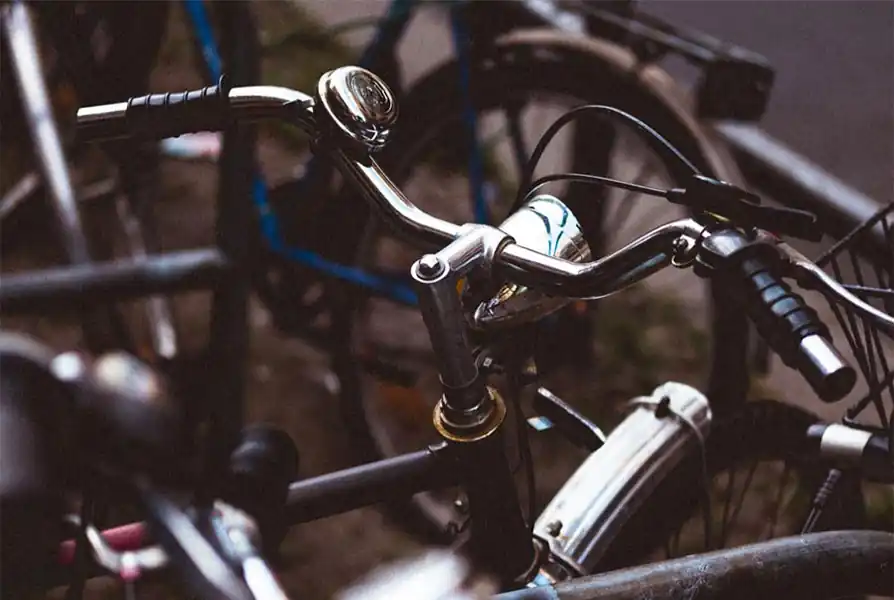No products in the cart
Do I have to follow cycling rules while riding a cargo bike?
Do you want to change your daily commuting habits and get around the city but doing that with a cargo bike worries you? Don’t panic, we’re here to tell you how to ride in the city and which cycling rules you need to follow if you are in the UK!
Breaking news: while riding a cargo bike (or not), one must respect the traffic regulations. But if you are driving a non-motorized vehicle, a driver’s license isn’t necessary, therefore you cannot have penalty points. An electrically assisted bike cannot go beyond 15.5mph and isn’t considered a motorized vehicule.
But you still have to respect the traffic rules! Remember one thing: seeing and being seen on a bike is the most important thing!
Cycling rules: equipment you need to ride safely on a cargo bike
In the event of an accident, bikers are prone to serious injury or death. We therefore emphasize that to ride a bike safely, it is necessary to follow one of the first cycling rules: having the right equipment.
Protect yourself and your bike:
- First make sure you have a functional bike with fully reliable front and rear brakes.
- Bike bells are not required by law in the UK, but it’s good to have it.
- The helmet is optional in the UK but it is still a highly recommended. In Australia, New Zealand and some parts of Canada, wearing a helmet is mandatory.
- In case of bad weather, remember to be well equipped and be extra careful.
Being visible, a cycling must:
- Having reflectors on your bike is a must. You should have at least one red rear reflector and four amber pedal reflectors.
- Between sunset and sunrise, position lights must be turned on. A white one a the front and a red one at the back.


Some cycling rules if you ever find yourself riding in the UK
Reminder: In cases of non-compliance with cycling rules and laws, cyclists risk penalties ranging from a call to order to imprisonment or fines.
Our list of the main points you should be aware of:
- The cyclist must use the bike paths and bike lanes. This is no longer mandatory in all countries since 1999, but is strongly recommended.
- Make yourself visible when turning by signaling your direction with your arm. There are also indicators that you can integrate onto your bike. These are recommended but not mandatory.
- Take into account traffic lights, ground markings, right-of-way and pedestrian crossings and priorities.
- For traffic lights, we have some precisions. There are certain well-defined cases where you don’t have to make a stop:
- if a sign authorizes you to do so
- if you are going straight at a three-way junction
- if you are turning right at a four-way intersection
- It is prohibited to ride your bike on sidewalks unless it is marked as a bicycle path
- If there is no bicycle path, ride on the road in accordance with traffic regulations. Do not forget to be extremely careful with the surrounding traffic (stay well to the right for example).
- Keep a safe distance from other cyclists.
- It’s obvious, but we’ll say it again: you are not allowed to cycle on the highway.
- Use bicycle lanes (if available) at intersections.
- Possibility of using pedestrian areas if no other bicycle lanes are available, unless there is a prohibiting sign.
- Going in the opposite direction in a lane is allowed only if the speed limit is less than 50 km/h.
- Two cyclists can ride side by side if the lane is wide enough, but also if it doesn’t hinder traffic and if it respects posted signs.
- Yes, you can pass stationary vehicles, whether in bike lanes or not, with caution, if the visibility is good, and if the surrounding traffic allows it.
- Parking may be on the pavement or in designated parking spaces. (And you are encouraged to lock up your bikes!)
- Waiting in front of cars at a red light is possible and allows you to start more safely and to position yourself well if you need to turn.
- You won’t be surprised: but it is forbidden to take calls while you are riding your bike (the €135 fine can, quite rightly, quickly discourage you).
- Finally: for your own safety and that of others, do not ride your bike under the influence of alcohol or drugs.
The advantage of a three-wheeled electric cargo bike is that it retains the benefits of a conventional bicycle while remaining a practical and active means of transportation!
What about cycling rules for cargo bikes? Are they the same?
Finally, we have explained the rules to follow on a normal bike, but how does it work on a cargo bike? That’s the subject of our article, so let’s get down to it:
Three-wheeled, two-wheeled, longtail, midtail… If you are riding a cargo bike and it doesn’t exceed 1 meter in width, then your cargo bike is considered a conventional bike with the same cycling rules as stated above. If your cargo bike exceeds 1 meter: reflectors and position lights will be mandatory on the front or rear trailer. However, riding a cargo bike differs from riding a conventional bike. It should be tested beforehand in a safe place to ensure everyone is at ease.
Indeed, make sure you are stable with front or rear loads while being aware of the width of your bike in order to ride safely in traffic.
In the UK it is legal to carry a child in a bike seat on a bike, cargo bike or e-bike. There is nothing in the Electrically Assisted Pedal Cycles Regulation 1985 or the 2015 amendment to the regulation which prohibits this. Learn more about the different conditions for transporting your child on three-wheeled bikes, two-wheeled bikes, or other cargo solution on the We are Cycling website.
Tips: If you want to get around on a cargo bike without exceeding the width of a conventional bike, AddBike transport modules are a solution, since they do not exceed 69 cm (and can therefore go through the doors of your home). We have also created a midtail bike that is 20 inches longer at the back: the U-Cargo, which is designed for the whole family. This bike allows you to transport children and loads (lite or family option) while remaining manoeuvrable in an urban setting. It is currently on pre-sale with electric assistance.
To conclude,
Cyclists are asked to be more cautious when riding in cities. But don’t panic, cycling rules are straight forward for everyone involved and are very easy to follow.
Clean mobility and cycling is a big yes for us, but it has to be done safely!



